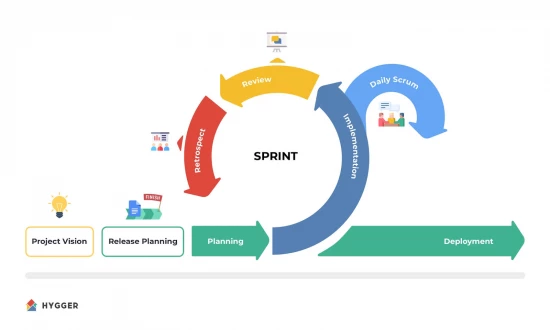Understanding Scrum: A Comprehensive Guide to Agile Project Management
In the realm of project management, Agile methodologies have gained widespread adoption, with Scrum standing out as a prominent framework for iterative and collaborative development. This article aims to provide a comprehensive overview of Scrum, encompassing its principles, key components, and the benefits it offers to modern organizations.
The Essence of Scrum
Scrum is an Agile framework designed to facilitate the development of complex products. It is founded on a set of values, principles, and practices that empower cross-functional teams to adapt to changing requirements, maximize productivity, and deliver high-value products. At its core, Scrum embraces flexibility, transparency, and continuous improvement, enabling teams to respond effectively to the dynamic demands of today's business environment.
Key Components of Scrum
1. Sprints
- Sprints are time-boxed iterations, typically lasting 2-4 weeks, during which a potentially shippable product increment is created. This iterative approach allows for frequent inspection and adaptation.
2. Scrum Team
- The Scrum Team consists of a Product Owner, Scrum Master, and Development Team. They collaborate closely to deliver valuable increments of work.
3. Product Backlog
- The Product Backlog is a prioritized list of all the desired work on the project. It evolves as new requirements emerge or priorities change.
4. Daily Stand-up
- Daily stand-up meetings provide a forum for the team to synchronize activities and plan for the day, fostering transparency and collaboration.
5. Sprint Review and Retrospective
- At the end of each sprint, the team conducts a review to demonstrate the work completed, and a retrospective to reflect on the process and identify areas for improvement.
Advantages of Scrum
1. Flexibility and Adaptability
- Scrum's iterative nature allows for flexible responses to change, ensuring that the product remains aligned with evolving stakeholder needs.
2. Transparency and Collaboration
- The framework promotes transparency, open communication, and collaboration, fostering a shared understanding of project goals and progress.
3. Faster Time to Market
- By delivering incremental value in short iterations, Scrum accelerates the time to market for products and features, providing a competitive edge.
4. Customer Focus
- Scrum places a strong emphasis on customer feedback and satisfaction, leading to the development of products that genuinely address user needs.
5. Continuous Improvement
- The regular review and retrospective sessions enable teams to continuously improve their processes, leading to enhanced productivity and quality.
Embracing Scrum in 2024
In today's rapidly evolving business landscape, the Agile principles espoused by Scrum are more relevant than ever. By embracing Scrum, organizations can foster a culture of adaptability, collaboration, and continuous improvement, thus positioning themselves to thrive in an environment characterized by complexity and change.
In conclusion, Scrum stands as a powerful Agile framework that empowers teams to deliver value in a dynamic and uncertain world. Its focus on iterative development, customer collaboration, and continuous improvement makes it a compelling choice for organizations seeking to achieve excellence in product delivery and project management.
By understanding and leveraging the principles of Scrum, organizations can navigate the complexities of modern business with confidence, resilience, and a commitment to delivering exceptional results.


